Do you like to create things that are beautiful, or that are useful? Julie B. Booth does both. She makes ‘products with intention’ that are usable and, at the same time, are colourful works of textile art. Whether these are cloth books, talisman pouches or boro-style bags, Julie’s focus on the visual and tactile details shines through.
Encouraged to embroider and be creative as a child, Julie was inspired to take a degree in Studio Art and used her print, stitch and beading skills to develop a small embroidery business. She worked as a graphic designer for 20 years, but her first love was always stitch. After gaining fresh inspiration from Julia Cameron’s book The Artist’s Way, Julie established her own business, Thread Born Dolls, specialising in one-of-a-kind soft sculptured figures and doll patterns.
Today, Julie teaches classes in surface design, doll making and embellishment, and makes fabric collages – still ‘with a purpose’. She also makes printed, painted and resisted fabrics and her book Fabric Printing at Home shares her tried and tested techniques.
A quest for experimentation and new discoveries drives Julie onward, and her surface design is abundant, varied and full of mixed media fun.
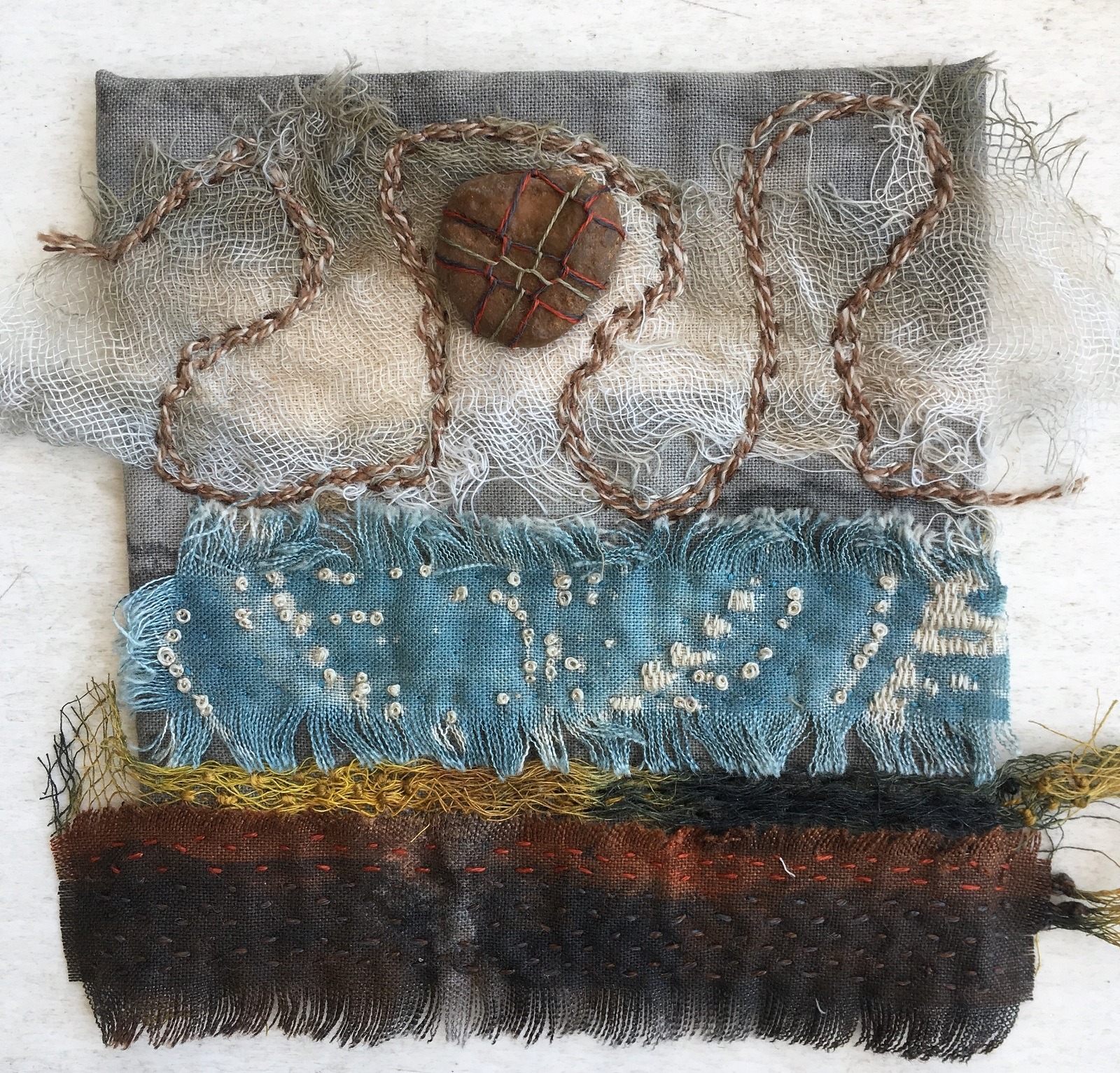
Embroidery beginnings
Julie B. Booth: It all started with a crewel embroidery kit. I can remember it so clearly… two owls sitting on a branch. My mom gave it to me as a form of distraction while recovering from walking pneumonia. At age 11, I thought it was pure magic! All the different colours of crewel wool, the stitch diagrams that I could work out. I was excited to get started… to make those buttonhole ring owl eyes!
It prompted me to begin stitching my own designs of cartoon animals. I still have an embroidery of a toad sleeping next to a toadstool from that time.
I really was pretty much self-taught when it came to stitching. My mom and her friends encouraged me and gave me books on the topic. I still own the two books that inspired and influenced me the most: Erica Wilson’s Embroidery Book (an orange tome of discovery!) and Adventures in Stitches by Mariska Karasz. Wilson’s book was my go-to stitch encyclopedia but Karasz’s book was my main inspiration. She has pages of playful approaches to stitches along with her delightful illustrations and black and white photos of her rich texturally stitched works. When I think about it, the seed of my approach to teaching stitching can be found in the pages of that book.
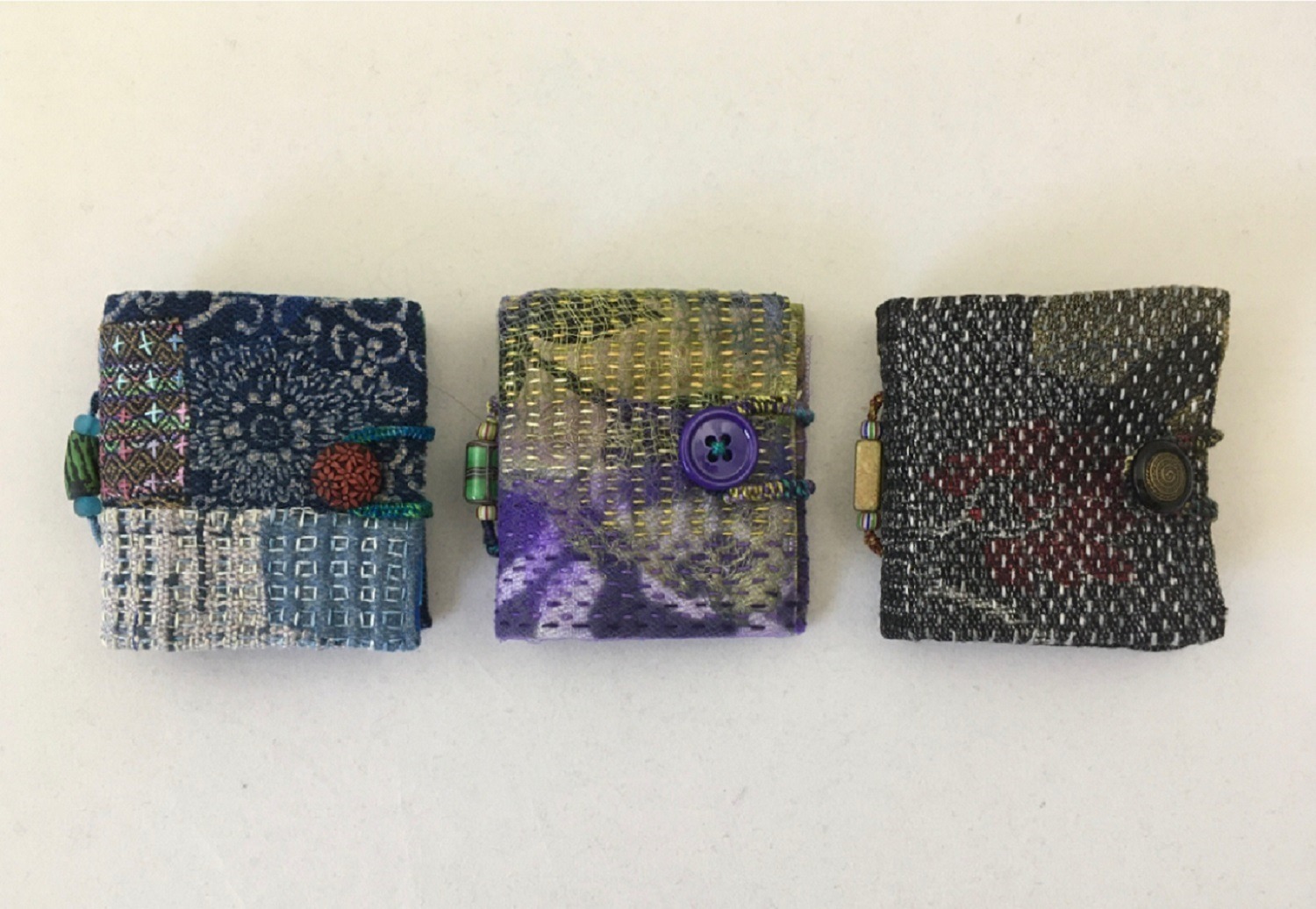
I’d enjoyed drawing and crafts from a young age and was encouraged by my parents who even arranged for art lessons outside school. Printing and stitching became my two favourite art activities and I used to carve linoleum blocks on Friday evenings as a teenager.
I got my BA in Studio Art with a specialism in printmaking from Wesleyan University, Connecticut and a certificate degree in scientific illustration from Rhode Island School of Design. My stitching became a small business for a while when I started embroidering the brims of tennis hats with flowers and cartoon animals playing tennis. I also took on bigger stitching projects for my family, including a family portrait and embroidered work shirts for my brothers. But after college my main employment was as a graphic designer and I did that for 20 years.
The return to stitch
I decided to head back to stitching more seriously and so I took a correspondence course in Surface Stitchery from the National Standards Council of American Embroiderers. This really opened my eyes to the potential of using stitch in a more artistic and painterly way.
When, in the mid 1990s, I caught the cloth doll bug, I started my business Thread Born Dolls. Beginning with more traditional (though original) doll designs, my style took a big turn after a class with cloth doll and surface design artist, Arlinka Blair. She showed me how I could bring together my love of print, stitch and beading to create cloth figures for the wall. Not long after that, I started teaching classes in surface design and doll making.
As interest in my printed fabric designs grew, I was asked to design a line of hand printed fabrics for a gallery. One of the owners had attended the opening of an exhibit of work by my group Fiber in Nearly Everything. He was attracted by the hand printed fabrics I’d created for my doll figures.
I also became interested in learning more about fabric resists and won a grant from my fibre guild to explore using common household materials as part of the process. I continued to explore using them to create print blocks, stencils and resists, publishing an online newsletter and blog that eventually led to the publication of my book, Fabric Printing at Home, in 2014.
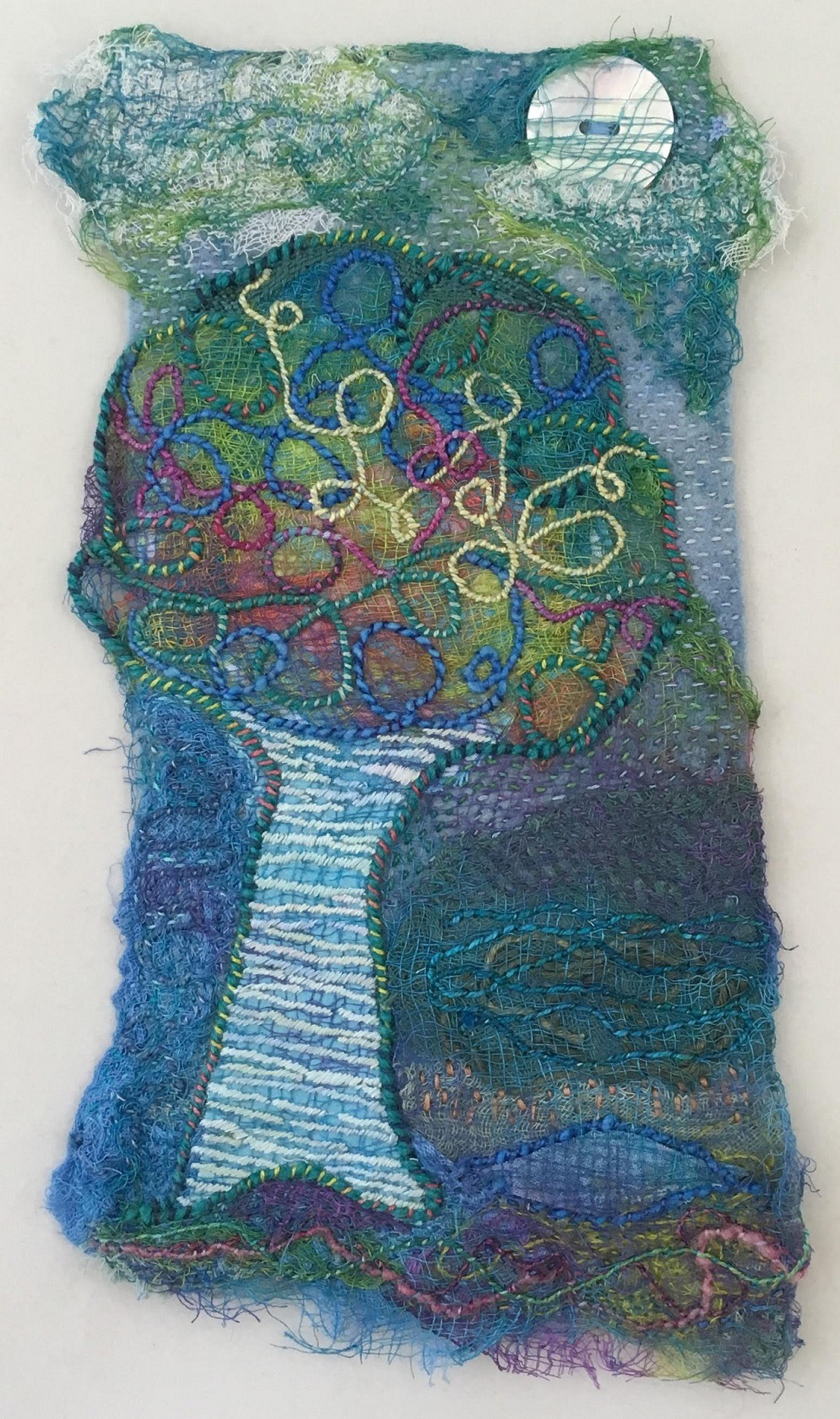
The healing power of stitch
Stitching was never far from my heart and, around the same time, I started teaching a series of classes that explored hand stitching as an expressive and healing art medium.
Though I’m not a trained art therapist, students in my classes, such as Healing Cloths, often find honouring memories through journaling and creating a stitched piece quite cathartic. Though many of the pieces are about healing, students have a choice to create other types of cloths… meditative, transitional, celebratory, aspirational.
The journaling sets the stage for the rest of the two-day workshop. I spend time privately talking with each student. Some of their stories are painful and I try to get the students to think about how some of their emotions could be represented visually and (or) symbolically.
I also encourage them to include symbolism that might get them through the difficult time – to the light on the other side. Students can bring in their own fabrics with personal meaning: linens, hankies or pieces of clothing that can be used in a symbolic way. I also bring in fabrics and scraps that often spark their ideas.
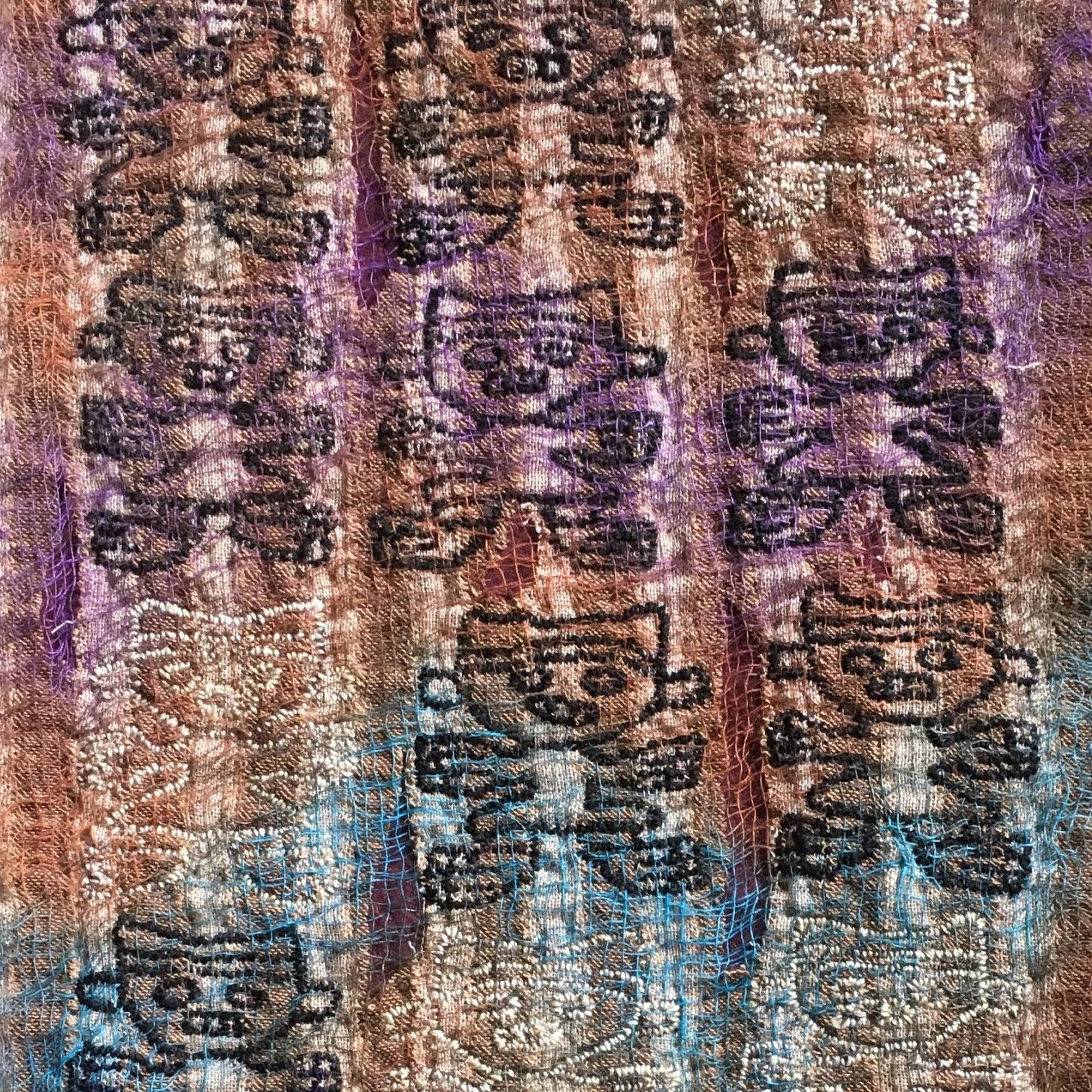
Many of the stitches covered during the class are those used to mend cloth, but I also include some dimensional stitches to attach meaningful objects, as well as bead embroidery techniques. Most of the cloths created focus on transitions or relationships, sometimes with family members who are no longer living.
For instance, one student wanted to focus on her deceased mother with whom she’d had a difficult relationship. The cloth she created included appliqués from her mother’s hankies and a teeter-totter image with buttons representing the relationship. It continued to develop after the workshop and the student said she not only felt a reconciliation with her mother, but that her mother was helping guide her through the process of creating the cloth.
Walking through the process
Usually when working out an idea, I will spend some time journaling and go out walking. I’ll come back and make more thumbnails.
I work from my studio on the lower level of my home in Vienna, Virginia, USA. I have a large work table (actually made up of four smaller tables with a large piece of plywood and padding) where I can work on both stitching and fabric printing and painting projects. I also have lots of shelving for materials and an adjoining room with additional fabric storage. I like to have some of my favourite threads handy in baskets and some organised in small boxes. Being able to see the thread colours on my table gets me excited to start stitching with them!
I find walking is a great opportunity to work through creative ideas. When they’ve come through, I pull out materials, fabrics first (often scraps) but depending on the project also sari ribbons, yarns, cheesecloth, tulle and threads. I’ll begin moving everything around on a backing fabric or stabiliser, usually felt or wool. When I’m happy with a layout, I’ll pin everything in place.
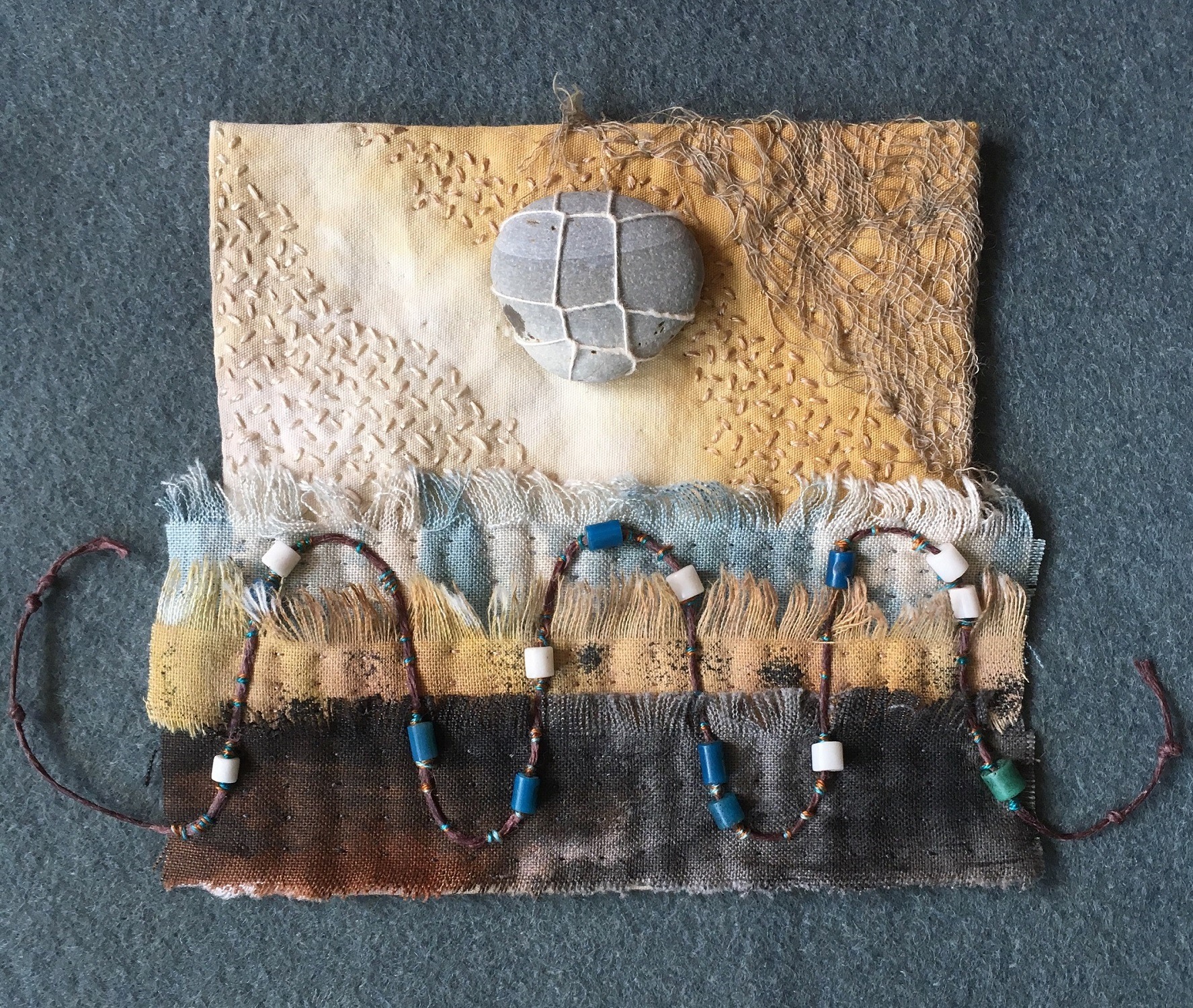
I don’t completely plan the stitching ahead. I may decide where I might like certain colours to appear but usually the stitching is the part that happens in the moment.
I make decisions as I go, trying to stay aware of colour values and the different textures and designs. After all the stitching is complete, I will stitch it into the final form, whether that’s a book or pouch etc.
I mostly work with fabric collage.
I layer fabrics on a stabilising fabric, usually felt, wool fabric or flannel. I don’t like to use a hoop because I find it cumbersome. There’s more freedom moving around a piece without one. Also, since I often make stitched objects, I cut the stabiliser to the size and shape of what I’m creating.
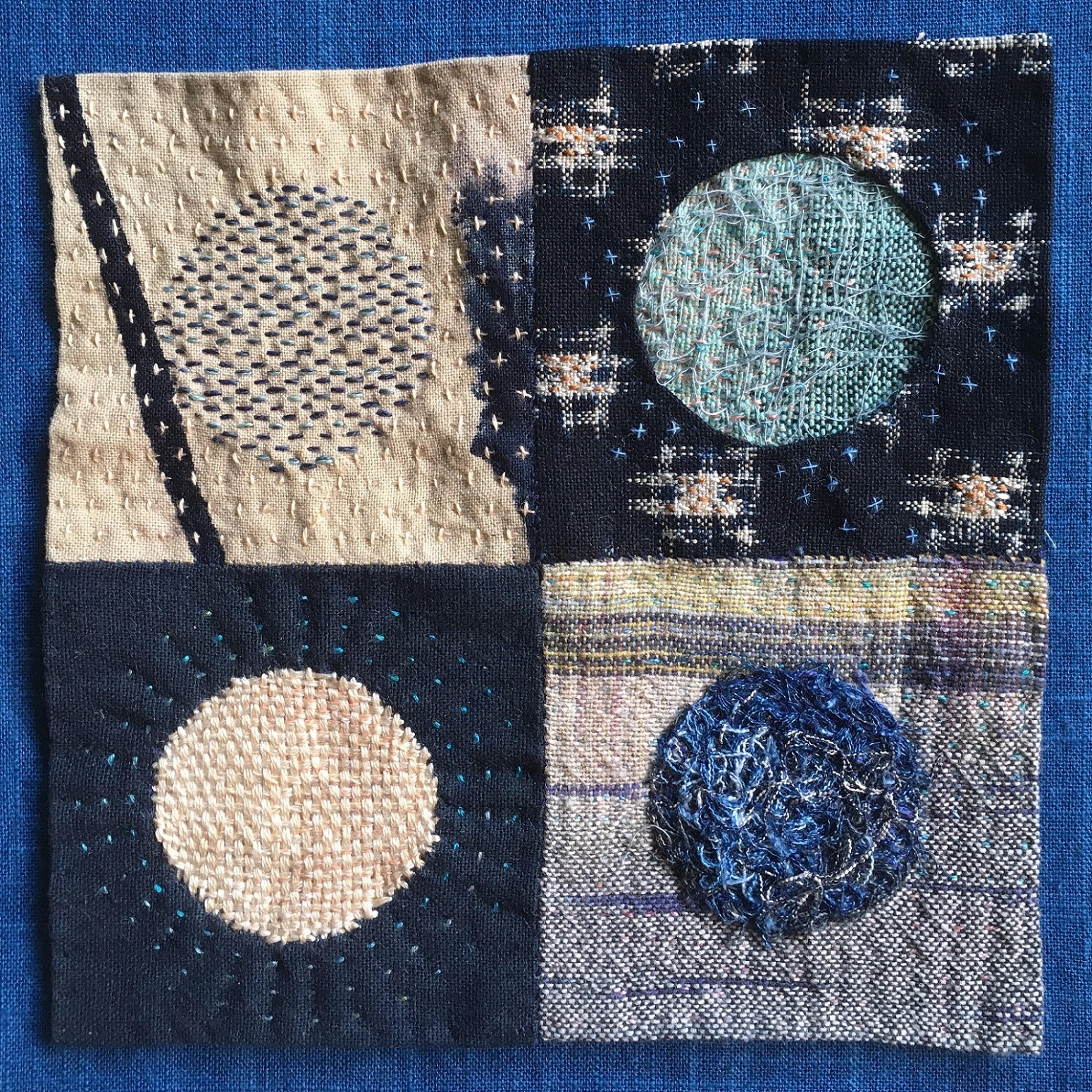
Recently, I have two stitching approaches.
One is freeform and organic. I lay out scraps, sari silk ribbon, yarns in loops and curves and see if they start to resemble something. I add hand-painted cheesecloth and often tulle for layers of texture. I couch the yarns down and also use running stitch for the wider silk ribbon. Next, I start to fill in some of the shapes formed by the yarn and silk ribbon. This is where I add even more texture with ruching, couching or French knots until I’m happy with the result.
The other method, in my boro-style pieces, is more structured. I cut out fabric scraps and sari silk ribbon and fit them together in a raw-edge patchwork that I cover with at least one layer of tulle to stabilise everything. Then I stitch running stitch patterns over the patches.
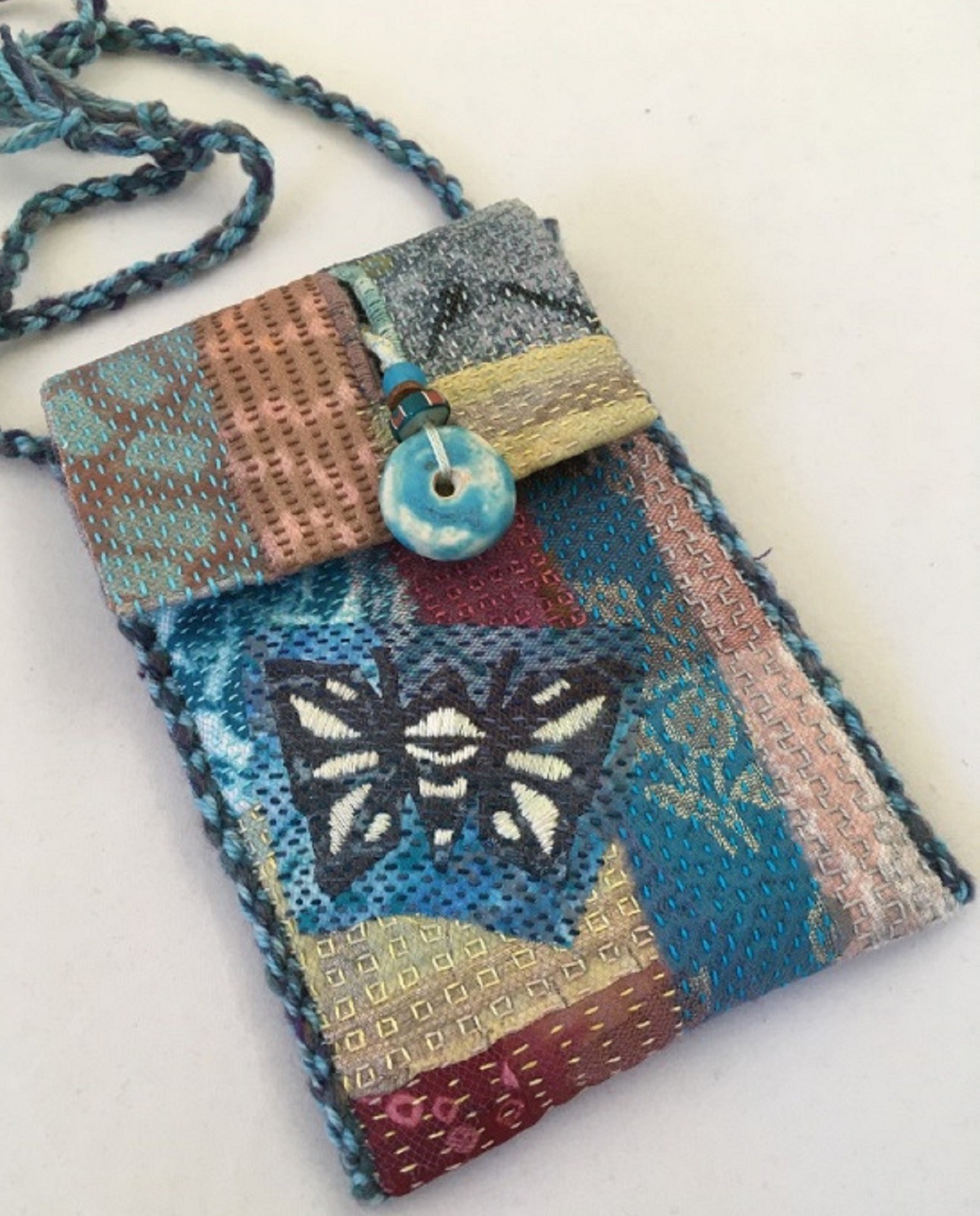
In addition to stitching, I enjoy designing my own painted, printed and resisted fabrics.
Bits and pieces of these often end up in my stitched work as backgrounds or focal fabrics (as in Inside Nanny’s Sewing Basket: Three Pairs, One Ornate).
My favourite kitchen fabric resists include liquid soap, microwaved confectioners’ sugar syrup and uncooked wheat flour paste, but I’ve experimented with resists as diverse as gelatin and baking powder. I’ve even tried toothpaste (and it worked!).
Each resist has its own characteristics: confectioners’ sugar creates velvety marks and wheat flour paste can mimic the crackling lines found in traditional batik.
My very favourite, though, is liquid soap, for its ease of preparation (none) and removal, and the diverse ways it can be applied to fabric. Most resists need to dry before applying fabric paint, but not liquid soap. It sinks into the fabric and is viscous enough to repel the paint. I can easily create multi-layered colour fabrics with resisted details using this common household product.
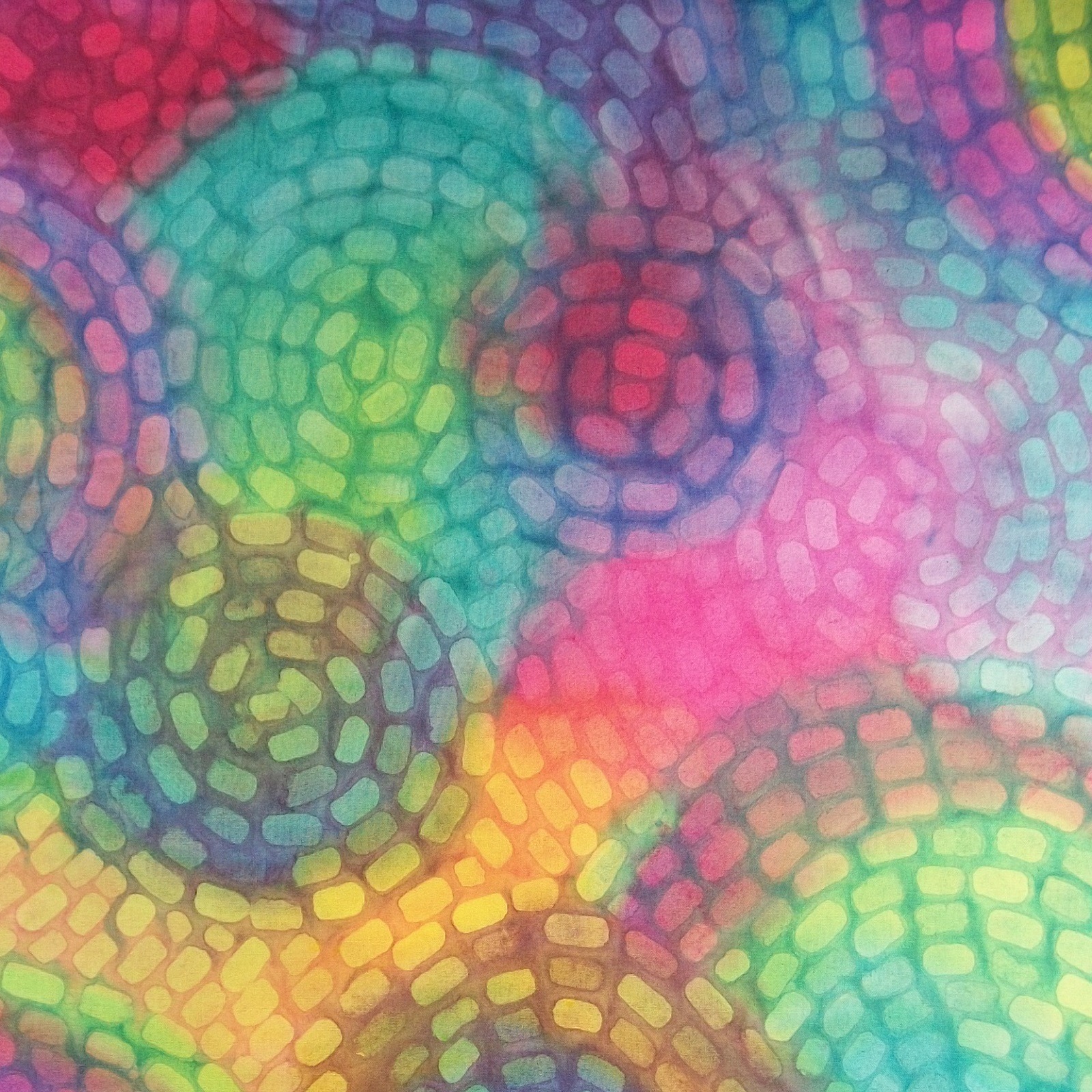
I am always inspired by natural forms. I love beach walks and I also have a special place in my heart for the quirky shapes of fungi.
I get excited when I see beautiful textiles, and ancient textiles make my heart skip a beat. I’ve been lucky to have the opportunity through the Textile Museum to get to see and study many ancient textiles up close. Much love and skill has gone into the making of these anonymous pieces.
I’m particularly fond of my work Inside Nanny’s Sewing Basket: Three Pairs, One Ornate. I stitched this in memory of my maternal grandmother. I had a deep connection with my nanny. She was also someone who enjoyed making things with her hands, had a beautifully arranged home and was proud of her flower garden. She’s been an on-and-off inspiration ever since I inherited her sewing basket 20 years ago. I discovered three pairs of scissors inside and one in particular was so beautiful – sterling silver with ornate designs.
For this work, I carved print blocks of the three scissors and printed them on one of my resisted fabrics. I added some of my hand-painted cheesecloth and couched it all into place. The scissors are all satin stitched.
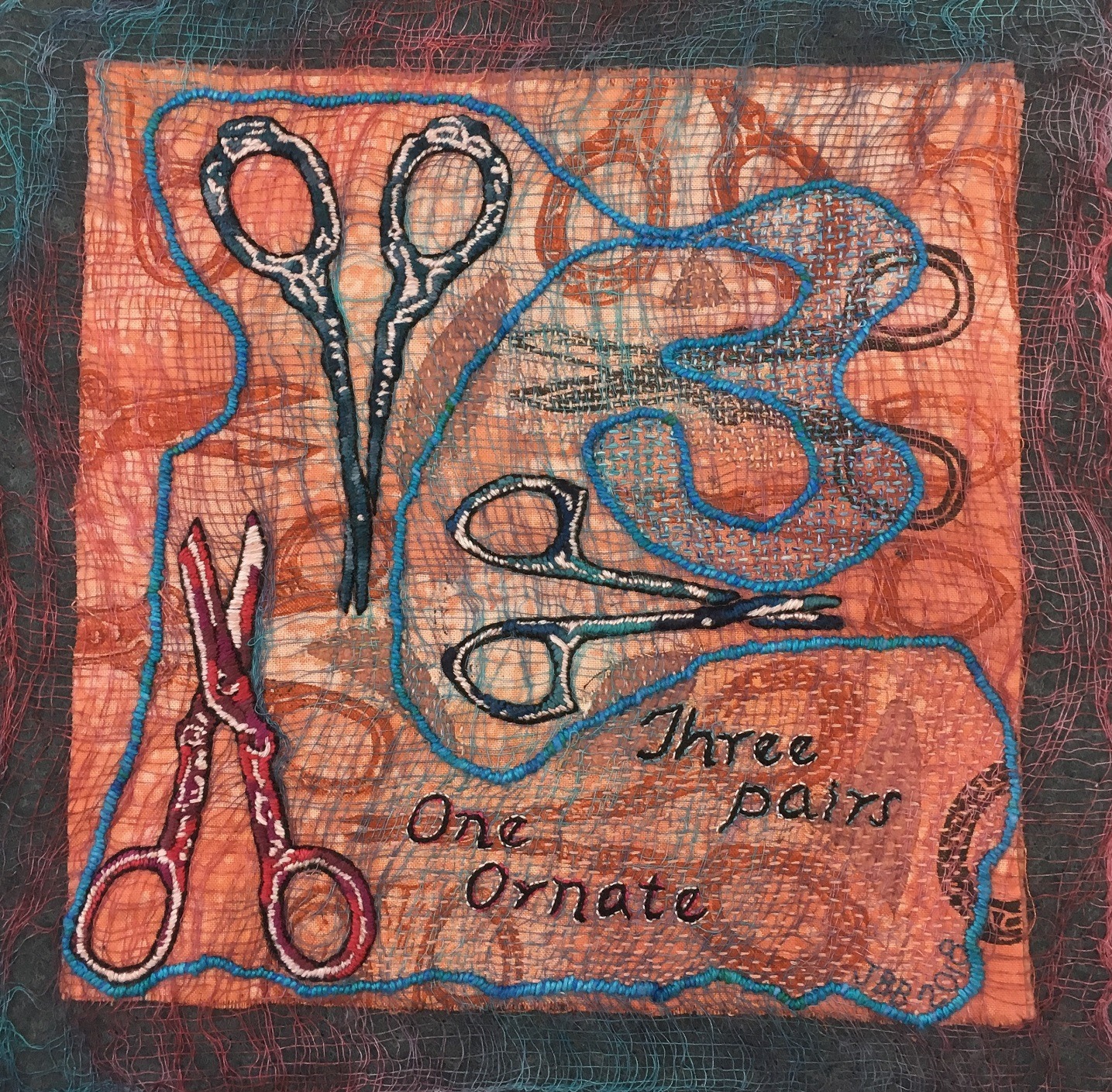
More recently, I’ve continued to write articles on hand stitching and surface design for Quilting Arts magazine and have appeared in several segments for three of their television series. I continue to teach and have enjoyed putting together classes and retreats including the Textile Museum Muse Project, where I provide opportunities for students to view selections of ancient textiles and objects from the Textile Museum, Washington DC collections, using them as inspiration for new textile artworks.
My work seems to keep shifting back and forth from 2D to 3D. My stitching focus is now on smaller, intensely stitched works including cloth books, talisman pouches and Boro-style bags. I’m inspired to make objects of intention with attention to the visual and tactile details: I enjoy seeing how people connect to them. A friend remarked: ‘I get to hold them, turn them over and over and admire each little part of them’. And it’s that connection that inspires me to carry on.
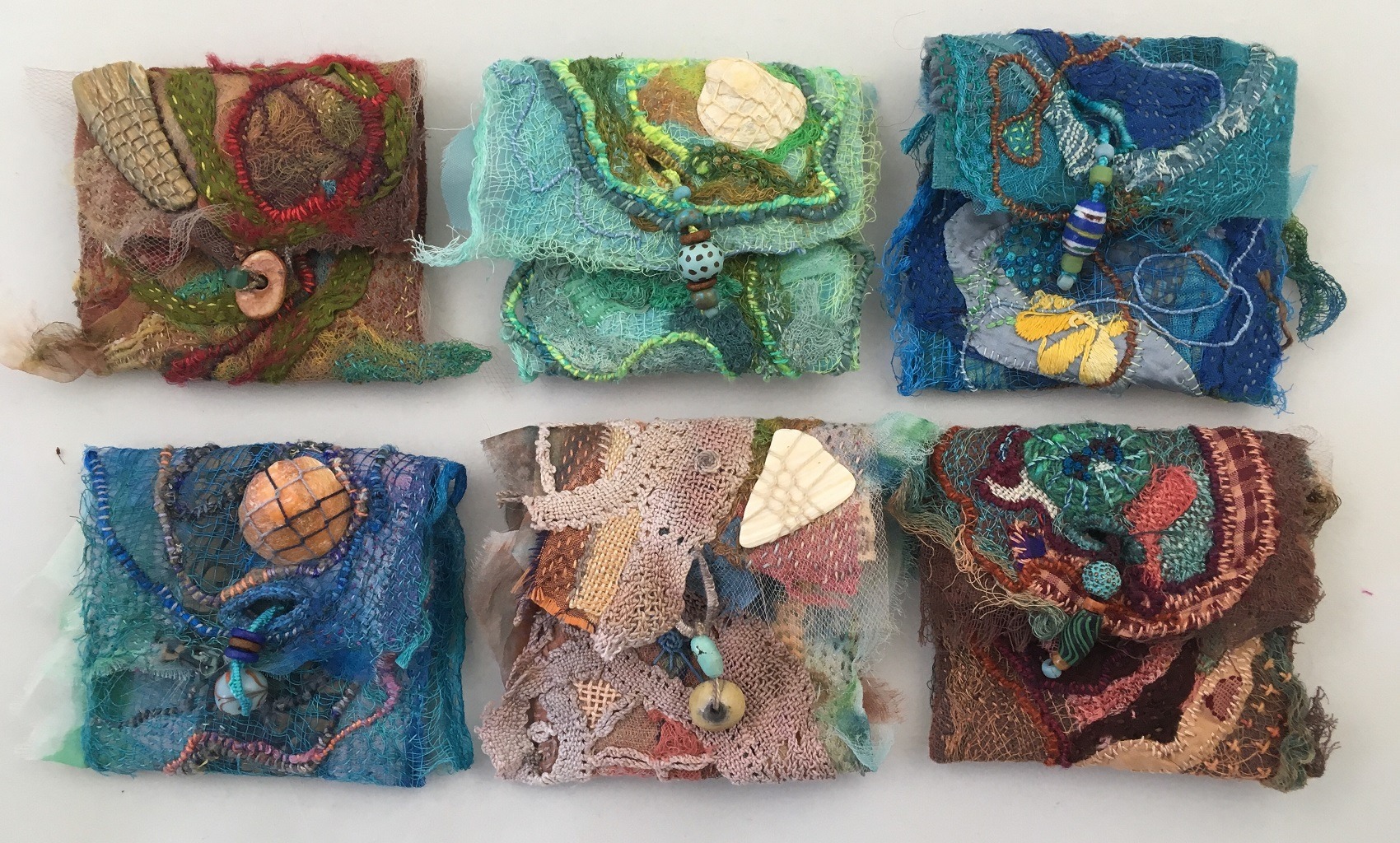
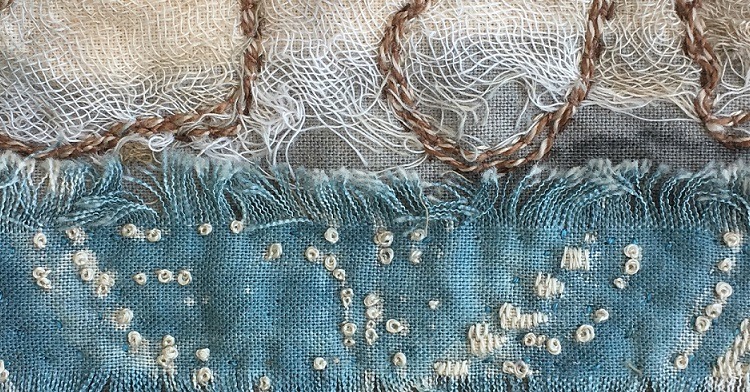

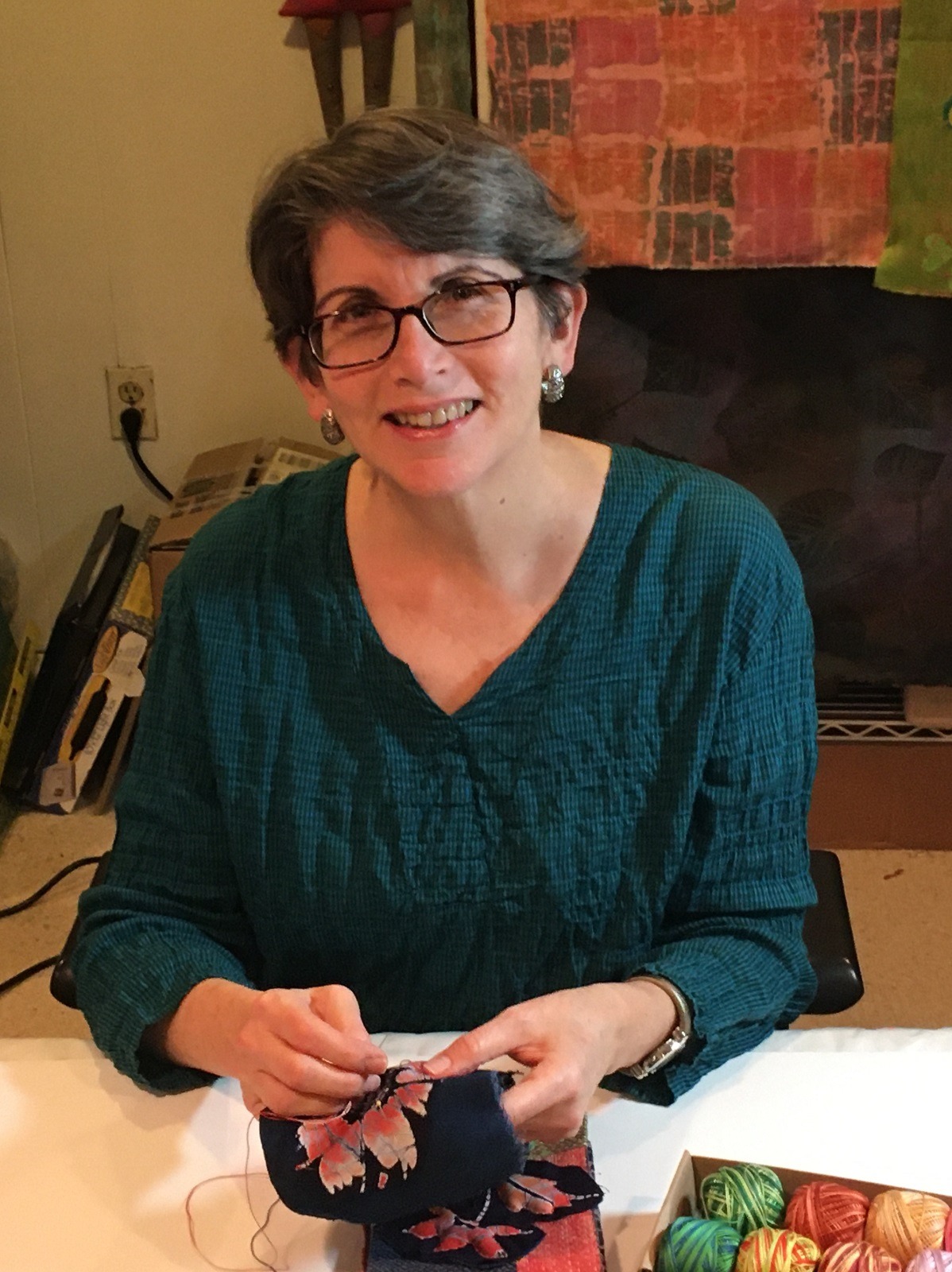
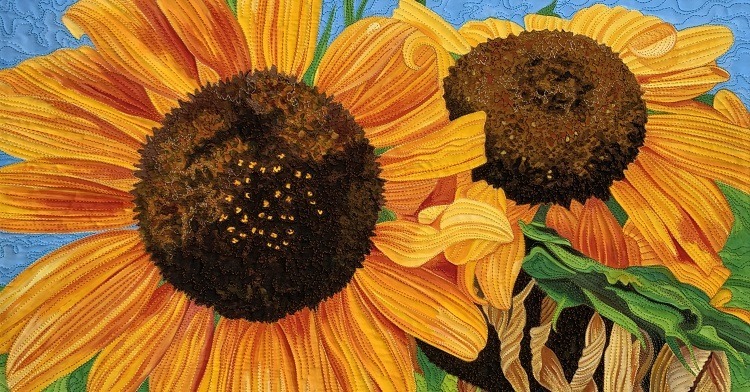
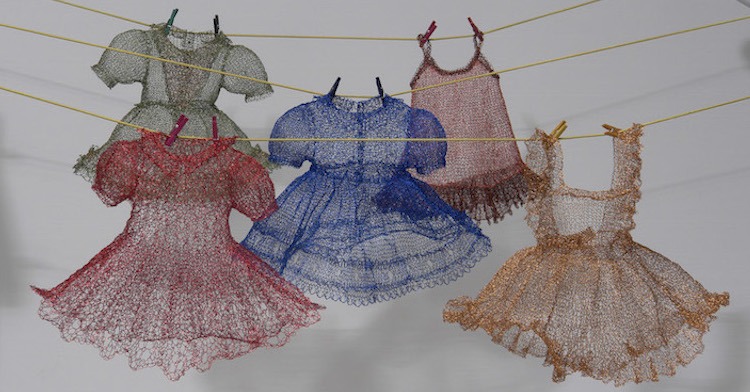
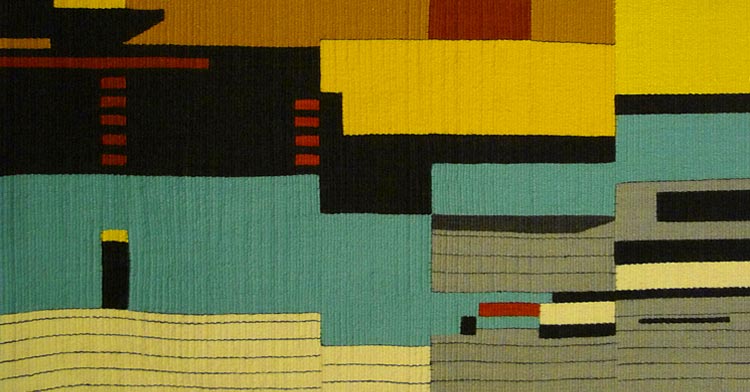
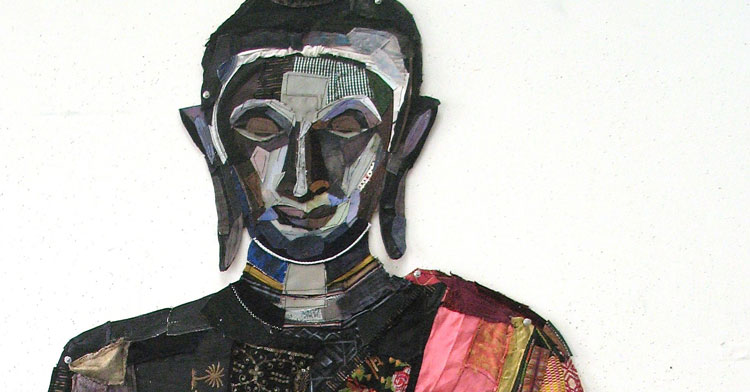
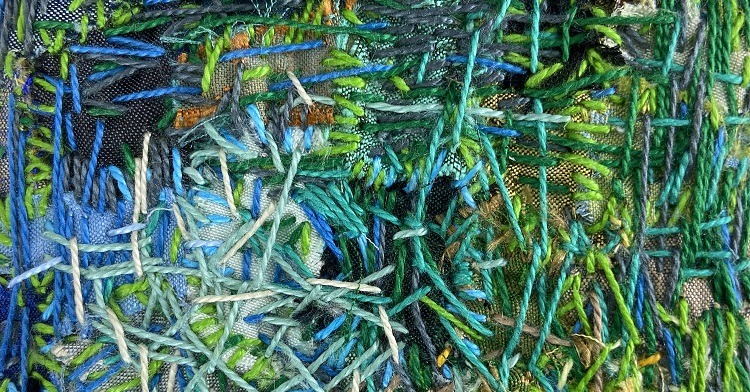
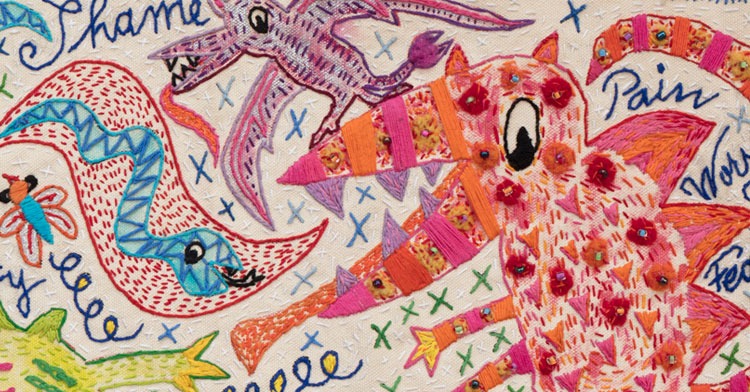
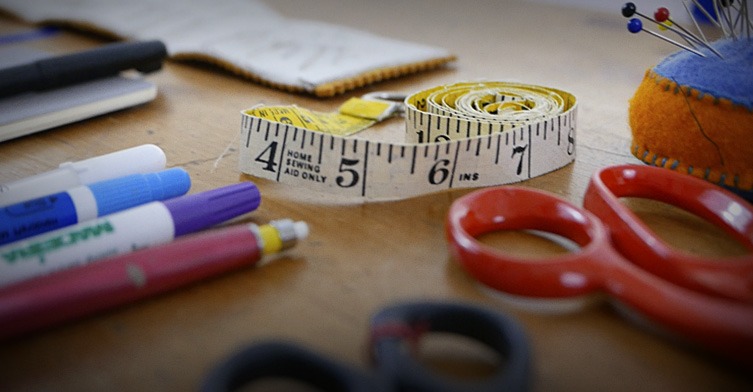
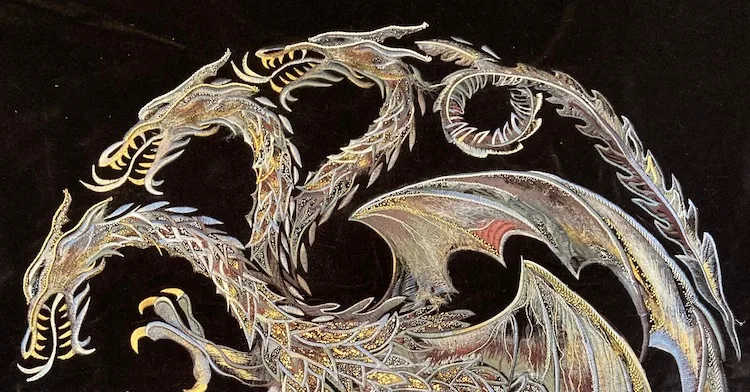
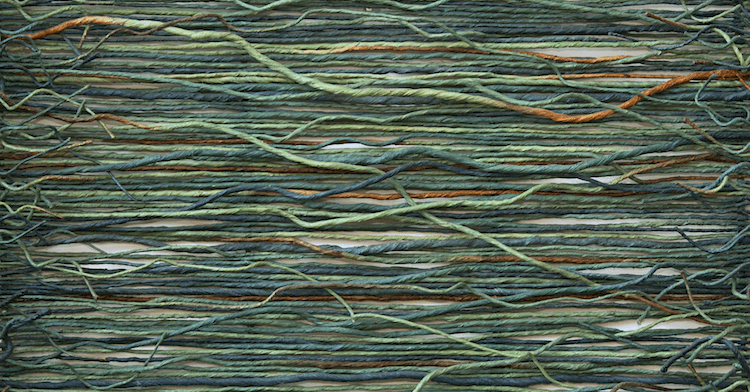
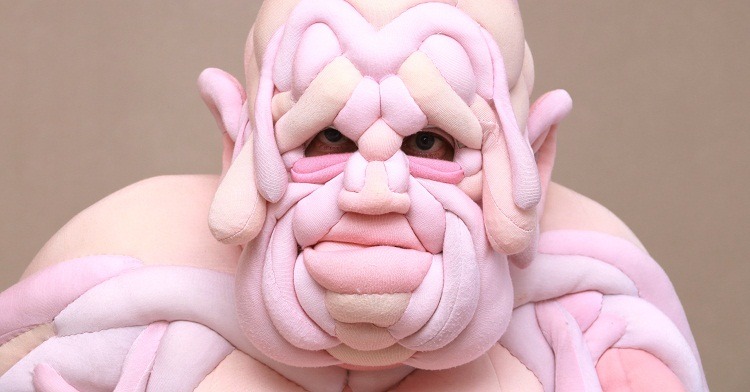
30 comments
Mary McCarty
A wonderful read. Very inspirational and full of useful information. Would love to take some class from her. Thank you. Mary McCarty
Jana Jopson
Something in this artist and her work feels so approachable. She is so talented and generous — that’s the feeling I get from this interview. The experimentation and willingness to follow the voice of the muse is inspiring. Talisman pouches are my favorite. Thank you!
Julie B. Booth
Jana- Thank you so much for you sweet comment. I enjoy teaching so much and love sharing ideas and techniques with my students. It brings me a lot of joy to see what they create and watch them grow and find their creative voice.
Judith Kolodny-Price
Dearest Julie,
Congratulations for your wonderful interview! Your stitching inspiration, warmth and friendship continue to drive my creativity journey.
Julie B. Booth
Hi Judith- You are so sweet! I miss seeing you and hope that we can get together for lunch (with Jan) once it warms up a bit. I can’t wait to hear what you’ve been up to!
Milena Toni
Ciao Julie ,
Sono molto belli i tuoi stick e l’unica cosa che non ho compreso è il “resiste “.
Forse metti a bagno i pezzi di stoffa che utilizzi in queste miscele o misture per creare l’effetto indurente?
Mi piacerebbe che tu facessi un tutorial sulla tessitura ,specialmente con richiami antichi o meglio primitivi.
Grazie Milena.
Julie B. Booth
Ciao Milena- Grazie per aver lasciato un commento. La maggior parte delle resistenze come la pasta di farina ha bisogno di indurire/asciugarsi sul tessuto prima che io possa dipingerci sopra con la vernice per tessuti. Il sapone liquido non ha bisogno di asciugarsi poiché assorbe il tessuto e respinge la vernice.
Andrea Maria Oland
Julie !!! Your workshop in Textileartist.org in august -20 was my no.1 during the 9 months that I joined the Stitchclub !! Still I get soo much energy from making buttonholestitch ! Still you are a Star on my heaven here in the Canary Islands. Thank you so much !!!
Julie Booth
Andrea- I’m so excited to hear that you enjoyed the Stitch Play with Buttonhole Stitch workshop. I was so impressed by what students created. Your comments are so sweet… thank you. I hope that you enjoy the upcoming workshop on Trapunto as well.
kaite matilda
I’m finding Julie Booth’s approach and her collage design very inspiring. I had dropped out of textile and fibre art for a couple of years following the deaths of two people who were extremely close to me and only just now returning to it. Artists like Julie are really lighting up my inner textile art fire. Thankyou
Julie B. Booth
Thank you Kaite! I’m glad that you’ve returned to textile arts. I find hand stitching so meditative and healing.
Barbarelle
So fantastic to see the woman who introduced me to the world of stitching featured here. I am looking forward to fall classes with you, Julie
Lynne Sward
Hi Julie,,,I am so very happy that you are being featured in “textile artist.org,,,,,You are just amazing with your commitment to your art/craft. Congratulations to you,,,and I look forward to seeing more of your “textile brilliance”,,,,
Barbara
Julie is a gifted and generous online instructor for new and experienced stitchers. I was fascinated to read this article and learn more about Julie and her process. Her classes are focused and well-sesignes—well worth the investment. See Fall offerings at The Art League online! I’ll be there!
Heather Herbstreit
Really inspired by this article Julie. I just purchased Julia Cameron’s book The Artist’s Way and I am hoping to uncover, discover and recover the artist that is within me. Reading your article is inspiring me to play and experiment. Thank you for sharing.
Annie
So interesting and inspirational Julie. Thank you so much for sharing your pieces, processes and passion!
Pat Merrell
Thank you – fits right where I am right now – the pieces I have to work with – in every way. Getting me over a hump design wise and getting me going… can’t ask for more than that!
Laurie Trippett
Julie’s Boro Stiching classes, as well as her class on Healing Clothes literally changed my life for the better and helped me through a dark time. I will forever be grateful to Julie for “liberating” my inhibition about experimentation with cloth and stitching.
Julie Booth is also extremely generous with her time and compassion. I have relied on her wisdom several times when I hit a tough spot creatively.
Take her words to heart!
Marit Meredith
Thank you for a lovely article, inspiring and informing, with lots of really lovely examples. I have used a lot of resist in the past, but liquid soap is a new one for me – one to be tried out!
Julie Booth
Hi Marit- Thanks for your comment. Yes- liquid soap resist is so fabulously fun to play with! It is really a go-to technique for me. Hope you do give it a try and report back!– Julie
Sherry
Great story of your journey! Glad you are sharing your talents with us!!
Jessie Amery
Enjoyed the interview after 32 years of full time work Teaching, working with immigrants and managing departments in university and college I joined the Canadian Embroiderers Guild of London Ontario Canada and put my love of textiles first. I very much put into practice Julie’s methodology and am very inspired daily by nature and needlework. Thanks for the interview
Marine weiss
What a wonderful interview. Julie has such a unique artistic approach that makes her work so special and soulful. I particularly like the union of freedom and control in the shapes and colors where the stitching emerges like a meditation.
Jane Basson
Such an interesting, insightful interview. Thank you, Julie, for sharing your stories and creative journey.
Julie Booth
Thank you Jane!
Jenny Robson
I really liked Julie’s use of scraps and pieced fabric, such a brilliant way to use up odds and ends. It’s great to see tactile, hand stitching, which is what I love myself. An excellent, inspiring article that will send me rooting through my scraps box again!
Pauline Ormerod
Loved reading and learning about Julie’s creative journey and her work .
Could relate to her influences and development but most impressed that she designs pieces that are meant to be tactile, to be held, used and treasured. Loved that she continues to explore new techniques, especially useing things from around the home..
Julie Booth
Thanks so much for your comment, Pauline. I’ve always enjoyed trying to figure out what can be done with things on hand…especially in my surface design work. I think working in fiber can be a way to connect to others on many levels.
Jan Dmith
She sounds so passionate about her work that it makes you want to pick up the needle straight away.
Loved the resist part of liquid soap doing it wouldn’t have thought of that.
Very interesting.
Janet Lincoln
Really inspired by the freedom of her work and the small purses as like to work unplanned too.